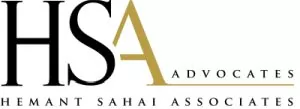CCI was unduly reliant on internal notings of 4 PSU insurance companies in the bid-rigging case.
As per a July 10 decision of the Competition Commission of India (CCI), a combined penalty of Rs 671 crore is imposed on four PSU insurance companies—National Insurance, New India Assurance, Oriental insurance and United India Insurance—for bid-rigging and cartel activities in response to tenders floated by the Government of Kerala for selecting an insurance service provider for the Rashtriya Swastha Bima Yojna.
The finding of the CCI is primarily based on an Inter-Company Coordination Committee (ICCC) meeting between these companies, recording their agreement to be ranked in the bidding process (presumably) in terms of the price quoted by them.
The four companies had put up a common (and combined) defence that since they were completely owned by the government of India and managed and controlled by the department of financial services (ministry of finance), they were a single economic entity and were therefore justified in discussing and taking a coordinated approach in the bidding process. However, the defence raised by the insurance companies raises issues regarding the extent to which these companies coordinate and align their commercial and business decisions. CCI may consider investigation of such (deliberate) anti-competitive practices adopted by these companies in other areas of their commercial activity.
The decision raises an important question—whether the evidence in the matter conclusively leads to identifying cartelisation among the state-run insurance companies. CCI relied heavily on minutes of the ICCC meeting to presume a cartel between the four companies. However, the ICCC minutes do not, as a standalone, lead to such a conclusive inference of cartelisation. It does not prove that insurance companies had discussed their bids with one another or had ultimately coordinated the pricing of their bids.
The conclusion of price manipulation has been drawn out by CCI by using the internal notes of such companies in relation to the tenders issued by the government of Kerala. The internal notes refer to the companies opting for re-tendering due to operational losses, and quoting higher tariffs during 2010 and 2011. Such internal noting, by itself, cannot be a proof of coordinated efforts between these companies for bid-rigging; it needs to be proven that the companies had acted jointly and in a coordinated manner pursuant to such internal noting.
In order to further establish price manipulation, CCI also relied on the fact that one of the competing private insurance companies had been able to run its business profitably during 2013 to 2015 at lower insurance premium.
This again can't be a conclusive evidence that the four insurance companies colluded for upward revision of their prices. Every company has its own efficiencies and it is a widely accepted position that PSUs are not best placed in terms of cost efficiency. Further, the conclusion of CCI is self-defeating since United India was at a risk of losing in the bid process with a higher price.
While it is a difficult to unearth direct evidence of conspiracies of cartelisation and price-fixing where decisions are taken behind closed doors, such conclusions cannot be drawn purely on the basis of assumptions. It would have been worthwhile for the DG to carry out extensive examination both in terms of economic evidence e.g. pricing patterns vis-à-vis costs, pricing differential, profitability and revenue generation of the concerned companies, and hard evidence in the form of letters, communications, mails and statements recorded of participants of the ICCC meetings.
However, the DG appears to have wounded up the investigation in three months when their European and US counterparts take years to gather data and evidence in support of such offences. The reason is that the standard of proof applied by the anti-trust authorities in these jurisdictions are strict and do not allow an element of presumption.
It is indeed difficult for the competition regulator to cope with the growing number of anti-trust cases that are being filed in various sectors of business. Nonetheless, exigencies of investigation cannot lead the regulator and courts to be emotive in dealing with such issues and must ensure that they look at hard data and evidence to arrive at findings of anti-competitive conduct.
The content of this article is intended to provide a general guide to the subject matter. Specialist advice should be sought about your specific circumstances.

